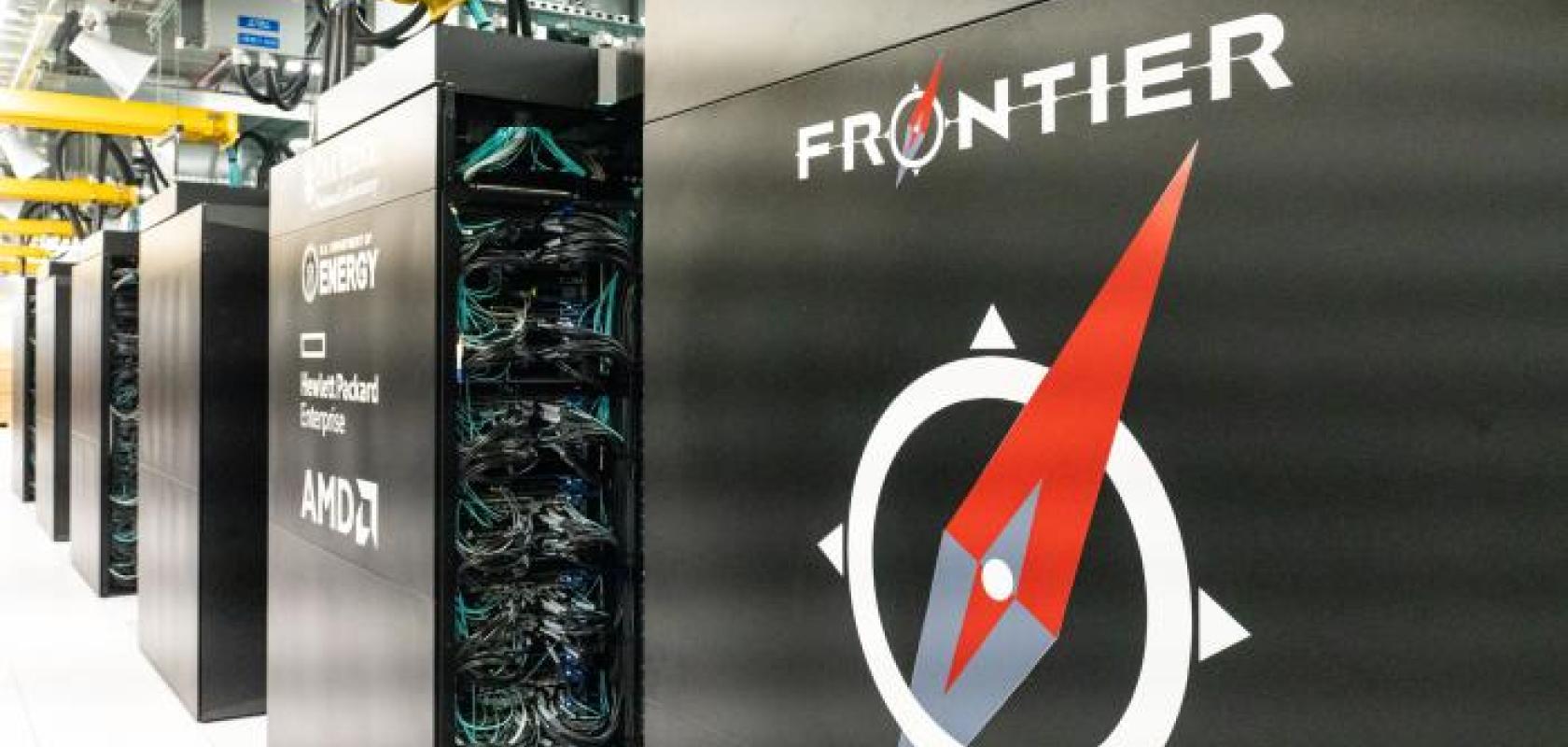The 60th edition of the TOP500 reveals that the Frontier system is still the only true exascale machine on the list.
The only new machine to grace the top of the list was the #4 Leonardo system at EuroHPC/CINECA in Bologna, Italy. The machine achieved an HPL score of 0.174 EFlop/s with 1,463,616 cores.
With an HPL score of 1.102 EFlop/s, the Frontier machine at Oak Ridge National Laboratory (ORNL) did not improve upon the score it reached on the June 2022 list. That said, Frontier’s near-tripling of the HPL score received by the second-place winner is still an impressive achievement for computer science.
Frontier demonstrated a score of 7.94 EFlop/s on the HPL-MxP benchmark, which measures performance for mixed-precision calculation. Frontier is based on the HPE Cray EX235a architecture and it relies on AMD EPYC 64C 2GHz processor. The system has 8,730,112 cores and a power efficiency rating of 52.23 gigaflops/watt. It also relies on gigabit ethernet networking.
The Fugaku system at the Riken Center for Computational Science (R-CCS) in Kobe, Japan, previously held the top spot for two years in a row before being moved down by the Frontier machine. With an HPL score of 0.442 EFlop/s, Fugaku has retained its #2 spot from the previous list.
The LUMI system, which found its way to the #3 spot on the last list, has retained its spot. However, the system went through a major upgrade to keep it competitive. The upgrade doubled the machines size, which allowed it to achieve an HPL score of 0.309 EFlop/s.
The data from this list shows that AMD processors are still the preferred choice for HPC systems. Frontier uses Gen AMD EPYC processors optimized for HPC and AI, as did the #3 LUMI system. That said, Xeon chips were also prevalent on the list. In fact, the new Leornardo system uses Xeon Platinum processors.
Once again, China and the United States took most of the entries on this list. While the US held strong at 126 machines on the TOP500, China dropped from 173 systems on the last list to 162 on this one. While these two countries make up nearly two-thirds of the machines on the list, it’s clear that other countries are working hard to bring about their own HPC innovations. In fact, taken as a whole continent, Europe accounted for 131 machines on this list as opposed to the 118 machines that appeared on the June 2022 TOP500.
The system interconnects shown on this list are very similar to previous ones, with small changes. Ethernet interconnects increased from 226 to 233 machines, and Infiniband dropped from 196 to 194 machines. Omnipath dropped to 36 machines from the previous 40, and the number of proprietary networks dropped from 6 systems to 4 on the new list.
GREEN500 Results
The system to take the top spot on the GREEN500 was the Henri system at the Flatiron Institute in the United States. Although the machine ranked at #405 on the TOP500 list, it had a successful showing in terms of its energy efficiency. The system has an efficiency score of 65.09 GFlops/Watts, 5,920 cores, and an HPL score of 2.038 PFlop/s.
Last list’s winner of the GREEN500 was the Frontier TDS machine, which has since moved down to the #2 spot. This system achieved an efficiency score of 62.68 GFlops/Watts, it has 120,832 total cores, and achieved an HPL score of 19.2 PFlop/s that earned it the #32 spot on the TOP500. Considering the Frontier TDS machine is basically just one rack identical to the ones used in the actual Frontier system, it would make sense that this machine is much more powerful than the #1 Henri system.
The #3 spot on the GREEN500 list saw an interesting development from the Adastra machine from France’s GENCI-CINES. On top of its high ranking in energy efficiency, this machine also captured the #11 spot on the TOP500. The Adastra system achieved an energy efficiency rating of 58.02 GFlops/Watts on top of its impressive HPL score of 46.1 PFlop/s.
However, in terms of both power and energy efficiency, the Frontier system once again shows some impressive results. Despite dropping from the #2 spot on the last GREEN500 to the #6 spot on this list, Frontier still provided incredible power for the amount of energy going in. The machine is able to produce 1.102 EFlop/s in HPL performance, all with an energy efficiency of 52.23 GFlops/Watts. Frontier is proof that the most powerful machines in the world don’t need to focus on performance at the expense of energy efficiency.
HPCG Results
The TOP500 list has incorporated the High-Performance Conjugate Gradient (HPCG) benchmark results, which provide an alternative metric for assessing supercomputer performance. This score is meant to complement the HPL measurement to give a fuller understanding of the machine.
The winner of this list, like the last list, is Fugaku with a score of 16.0 HPCG-petaflops. Unlike the last list, Frontier has submitted HPCG data and achieved an HPCG score of 14.054 HPCG-petaflops. This puts it at the #2 spot above LUMI, which scored 3.408 HPCG-petaflops.
HPL-MxP Results (formally HPL-AI)
The HPL-MxP benchmark seeks to highlight the convergence of HPC, and artificial intelligence (AI) workloads based on machine learning and deep learning by solving a system of linear equations using novel, mixed-precision algorithms that exploit modern hardware.
This year’s winner is the Frontier machine with its exciting 7.9 EFlop/s score on the HPL-AI benchmark test. Lumi was in second place with a score of 2.2 Eflop/s , followed by the Fugaku machine with a score of 2.0 Eflop/s


